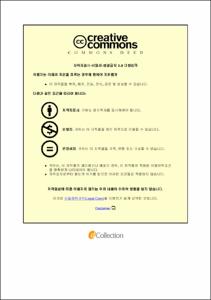Generation and molecular characterization of the patient derived xenograft model of pancreatic cancer and triple negative cancer with its application in preclinical study
- Abstract
- Establishing an appropriate preclinical model is crucial for translational cancer research. The most common way that has been adopted by far is grafting cancer cell lines. Although this xenograft model is easy to generate, but has several limitations because this cancer model could not represent the unique features of each cancer patient sufficiently. In attempt to avoid these discrepancies between xenograft model and patients’ tumor, a patient-derived xenograft (PDX) model has been recently generated and applied.
Here we report the generation and characterization of 20 PDX models of PDAC. The success rate of the initial graft was 74%. Histological analysis of the PDXs and primary tumors revealed a conserved expression pattern of p53 and SMAD4. An exome single nucleotide polymorphism (SNP) array and Comprehensive Cancer Panel showed that PDXs retained over 94% of cancer associated variants. In addition, Polyphen2 and the Sorting Intolerant from Tolerant (SIFT) prediction identified 623 variants among the functional SNPs, highlighting the heterologous nature of pancreatic PDXs; an analysis of 409 tumor suppressor genes and oncogenes in Comprehensive Cancer Panel revealed heterologous cancer gene mutation profiles for each PDX-primary tumor pair.
Also, for breast cancer study, to identify novel druggable targets and to understand its unique biology, we tried to implement 39 patient-derived xenografts (PDXs) of TNBC. The overall success rate of PDX implantation was 61.5%. Immunohistochemical analysis revealed conserved ER/PR/HER2 negativity between the original and PDX tumors. Genomic analysis of 10 primary tumor-PDX pairs with Ion AmpliSeq CCP revealed high degree of variant conservation (85.0% to 96.9%) between primary and PDXs. Further analysis showed 44 rare variants with a predicted high impact in 36 genes including TP53, PTEN, NOTCH1, and COL1a1. Furthermore, RNA-seq analysis of 24 PDXs revealed 594 gene fusions, of which 163 were in-frame, including AZGP1-GJC3.
Moreover, this paper presents two preclinical studies to show that PDX models are useful for drug screening, biomarker development, and the preclinical evaluation of personalized medicine strategies. Firstly, we conducted preclinical study investigating the efficacy of GnRH agonist for TNBC. We found that apoptosis was increased in tumor highly expressing GnRH receptor, and also B-Raf, p-ERK, p-MEK were decreased in the group which are injected GnRH agonist, on the contrary, cleaved PARP was increased.
As another example showing usefulness of PDX model, we studied the relationship of miR-155 and YAP. We conducted reverse phase protein array (RPPA) with 30 human TNBC samples (15 of miR-155 high and 15 of miR-155 low). The results of RPPA analysis showed phosphorylated YAP(S127) level was significantly down-regulated in miR-155 high group. Western blot results confirmed that pYAP(S127) was elevated in miR-155 knock-down cells compared to control. In addition, we selected a couple of protein by calculation of p-value in FPKM data from RNA-seq. As a result, SVIL was considered to be an important mediator in regulating YAP by miR-155. Conversely, we also tested if YAP controls the expression of miR-155. Indeed, the overexpression of YAP increased the level of miR-155, whereas its knockdown decreased miR-155 level.
Altogether, we expect these PDX models are a promising platform for screening novel therapeutic agents and diagnostic markers for the detection and eradication of PDAC and TNBC. Also our report provides a molecular basis for the usefulness of the TNBC PDX model in preclinical study.
- Issued Date
- 2017
- Awarded Date
- 2018-08
- Type
- Dissertation
- Affiliation
- 울산대학교
- Department
- 일반대학원 의과학전공
- Advisor
- 장수환
- Degree
- Doctor
- Publisher
- 울산대학교 일반대학원 의과학전공
- Language
- eng
- Rights
- 울산대학교 논문은 저작권에 의해 보호받습니다.
- Appears in Collections:
- Medical Science > 2. Theses (Ph.D)
- 파일 목록
-
-
Download
 200000109295.pdf
기타 데이터 / 4.82 MB / Adobe PDF
200000109295.pdf
기타 데이터 / 4.82 MB / Adobe PDF
-
Items in Repository are protected by copyright, with all rights reserved, unless otherwise indicated.